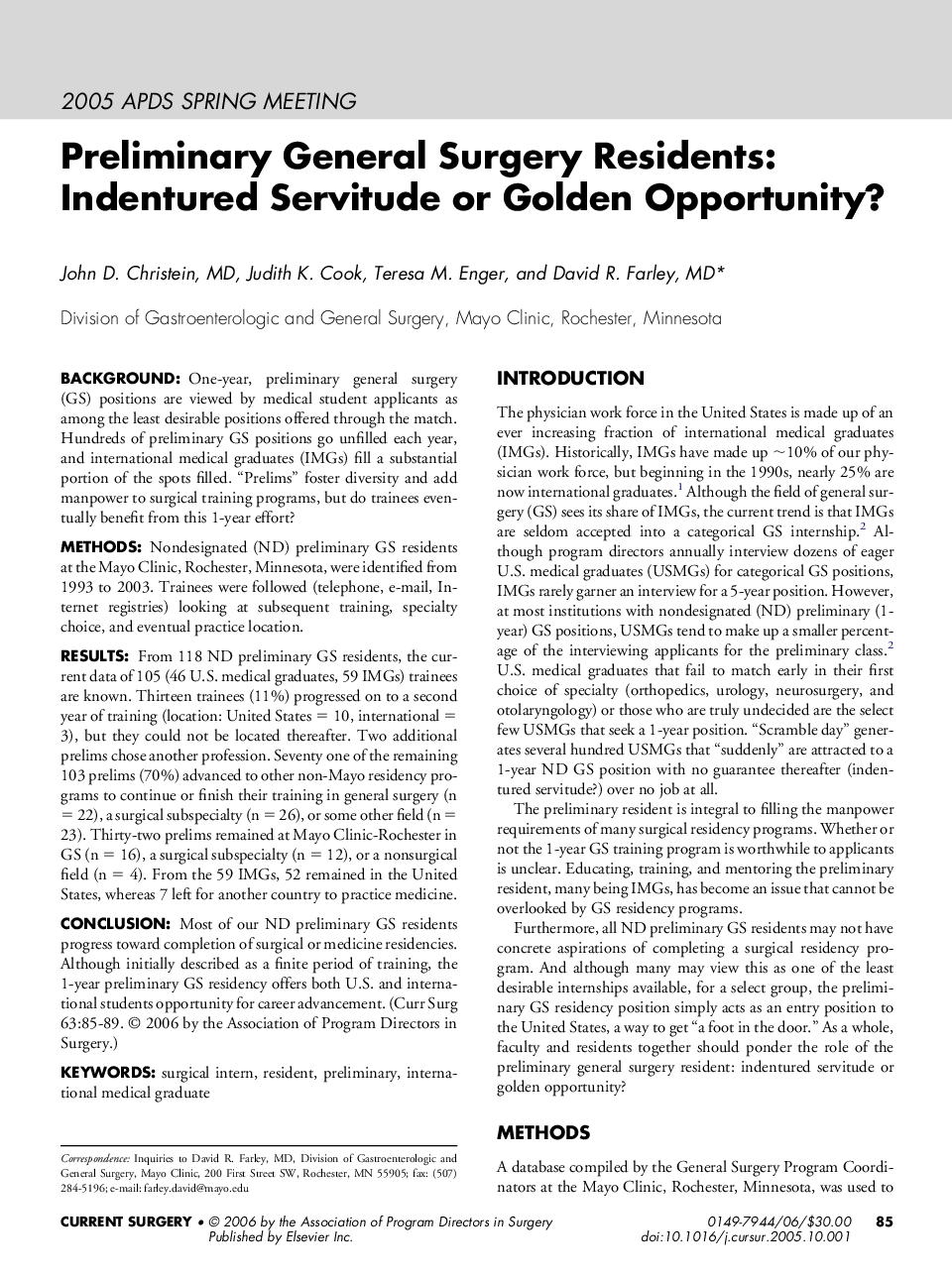| Article ID | Journal | Published Year | Pages | File Type |
|---|---|---|---|---|
| 4284406 | Current Surgery | 2006 | 5 Pages |
BackgroundOne-year, preliminary general surgery (GS) positions are viewed by medical student applicants as among the least desirable positions offered through the match. Hundreds of preliminary GS positions go unfilled each year, and international medical graduates (IMGs) fill a substantial portion of the spots filled. “Prelims” foster diversity and add manpower to surgical training programs, but do trainees eventually benefit from this 1-year effort?MethodsNondesignated (ND) preliminary GS residents at the Mayo Clinic, Rochester, Minnesota, were identified from 1993 to 2003. Trainees were followed (telephone, e-mail, Internet registries) looking at subsequent training, specialty choice, and eventual practice location.ResultsFrom 118 ND preliminary GS residents, the current data of 105 (46 U.S. medical graduates, 59 IMGs) trainees are known. Thirteen trainees (11%) progressed on to a second year of training (location: United States = 10, international = 3), but they could not be located thereafter. Two additional prelims chose another profession. Seventy one of the remaining 103 prelims (70%) advanced to other non-Mayo residency programs to continue or finish their training in general surgery (n = 22), a surgical subspecialty (n = 26), or some other field (n = 23). Thirty-two prelims remained at Mayo Clinic-Rochester in GS (n = 16), a surgical subspecialty (n = 12), or a nonsurgical field (n = 4). From the 59 IMGs, 52 remained in the United States, whereas 7 left for another country to practice medicine.ConclusionMost of our ND preliminary GS residents progress toward completion of surgical or medicine residencies. Although initially described as a finite period of training, the 1-year preliminary GS residency offers both U.S. and international students opportunity for career advancement.
